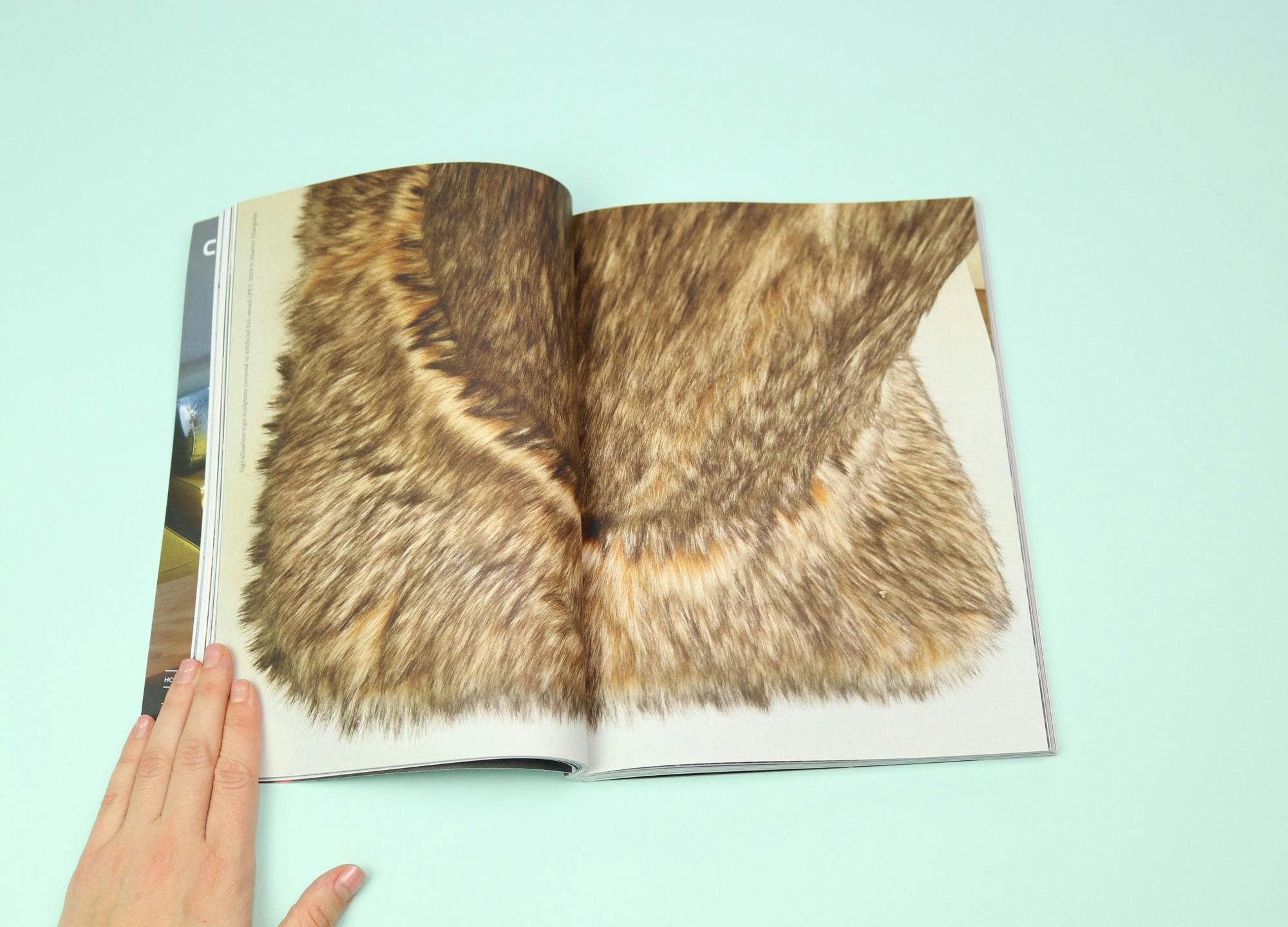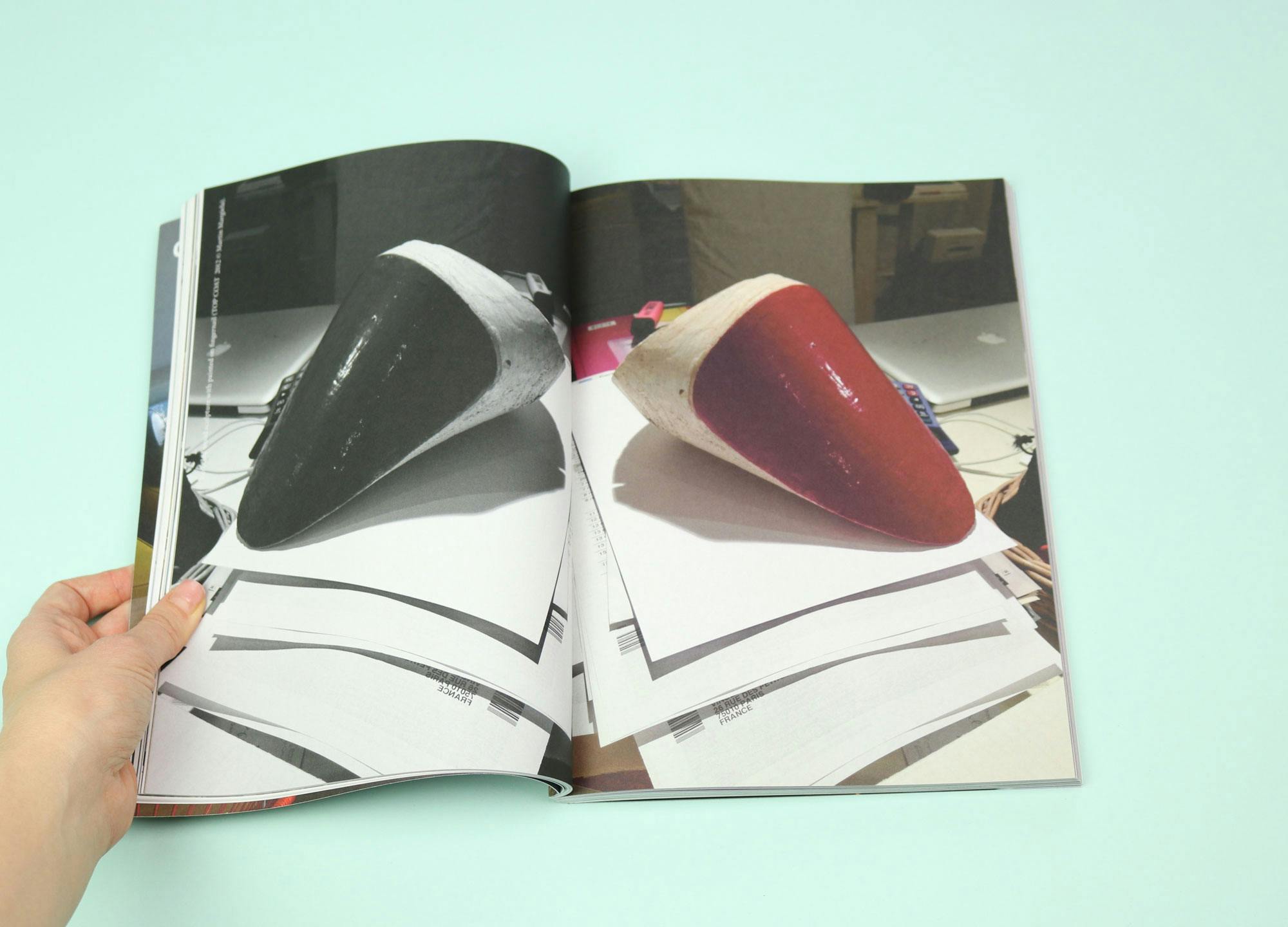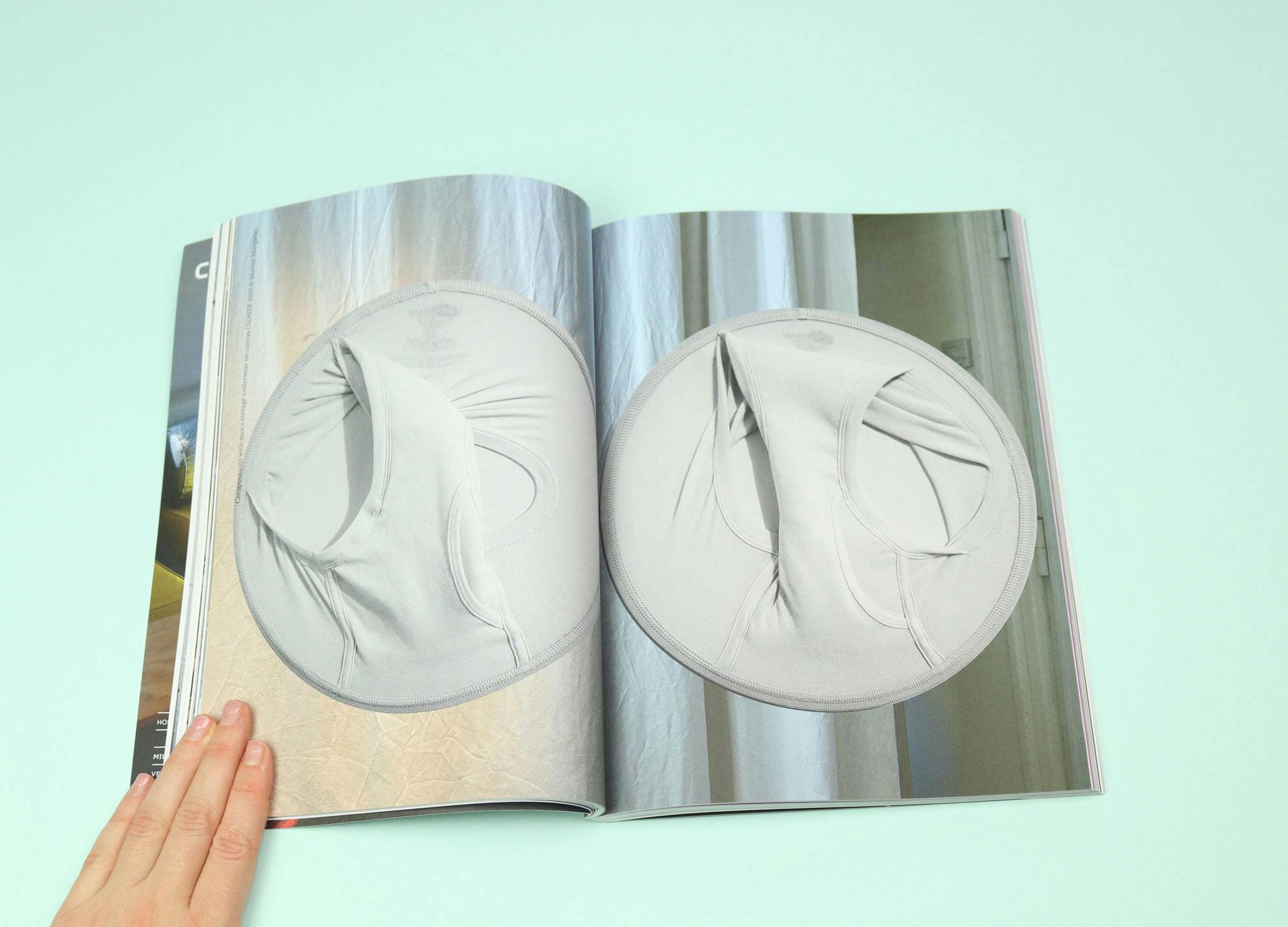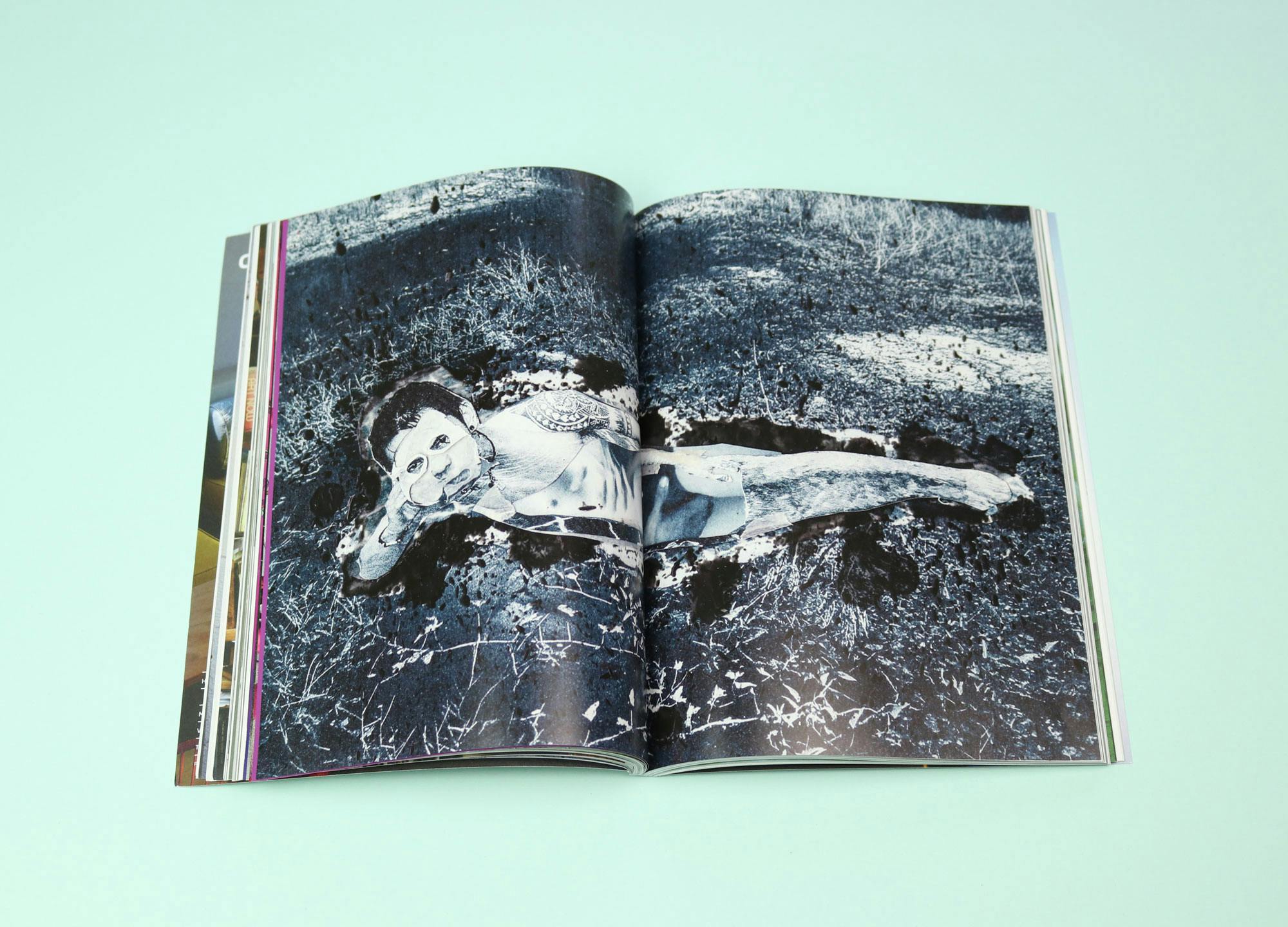WASHING PROHIBITED
Matto is a French magazine with an interest in the erotic, and fashion, and contemporary art. The theme for this issue is characteristically enigmatic: ‘Lavage Interdit’, which means ‘washing prohibited’. The furry front cover, as well as a central feature, is by the iconic Belgian fashion designer Martin Margiela and it is exquisite: there are juicy, fur-coated plinths, sculptures made out of men’s underpants, and women, their faces entirely obscured by hair. Looking at these photographs makes me think about ideas of time and renewal: about the significance of objects, and what it would feel like to run your fingers over a dead animal’s back.
When I rang up editors Aldo Buscalferri and Dominika Hadelova in Paris it turned out all my deep thoughts about time and renewal hadn’t really been on their minds at all, making the issue. This is part of the fun of Matto: there isn’t really a distinct brief or focus. Rather, exceptional work is collected and presented to the reader without heavy-handed intention. You are permitted to work out what you feel about this art for yourself.
Where in Paris are you speaking to me from?
Aldo: The Gare du Nord, the train station is three minutes from here. We live between two train stations: the Gare du Nord and the Gare du l’Est. So we can choose to go to London or up to Salzburg and Germany. It’s an area with a lot of movement and traffic. It’s not a bourgeois area. It can be very intense because you feel like you’re in the centre of the movement and often the strikes. But it’s energising.
You interview the florist Louis-Géraud Castor. He says this quote that I love: “You can’t be happy in life if you expect to have everything right now”. Were ideas about time, and the pleasure of waiting for things, in your mind as you made the issue?
Dominika: Because Matto isn’t commercial — it is a personal project — we make it slowly, without a distinct brief, so every issue is a reflection of what has been going through our heads at that time. We weren’t necessarily thinking about time when we were making issue 4, but I’m interested that you saw that theme running through. Maybe it was also due to the fact that the issue was made in a longer stretch of time, and we had more time on our hands, due to the epidemic and confinement? A focus on contemporary art is at Matto’s core, but that’s not always visible in the most obvious way. Louis-Géraud Castor was an art dealer before he was a florist, so he has a lot of history and knowledge of 18th and 19th century painting as well as contemporary art. I think that translates into the way he works with flowers.
Martin Margiela is famously elusive. How did you come to work with him on this issue?
Dominika: It came about in a very fluid, organic way. I almost couldn’t believe it was happening so fast. The theme of this issue is ‘Lavage Interdit’, which means ‘washing prohibited’, like you would read on a clothing label. Margiela was inspired by the contrast between a luxury fashion item and this very practical almost conceptual instruction sewn inside. He has been working on an exhibition for about a year that will open at the Galeries Lafayette Anticipations in Spring 2021, and the thinking behind this issue chimed with that. We have an idea of Margiela as a designer, but I would say he is really thinking as an artist. Speaking with him we noticed how he gets really intrigued by small, daily things. He can speak to you about the specific gestures a person made when they came round for dinner, or the way a woman did her hair. We are also inspired by these seemingly mundane things that can be a catalyst for something: for an idea, for a project.
There’s a textural element to the magazine. I think of it as a fluffy theme that extends from the front cover to the central spread. Was that deliberate?
Aldo: We like to think of the magazine as an object. On the level of paper, we really wanted to choose a paper that had a nice texture, so when you read the magazine, it’s a sensory experience. I wasn’t thinking consciously about the visual link between the cover and that photograph but I’m glad it’s there!
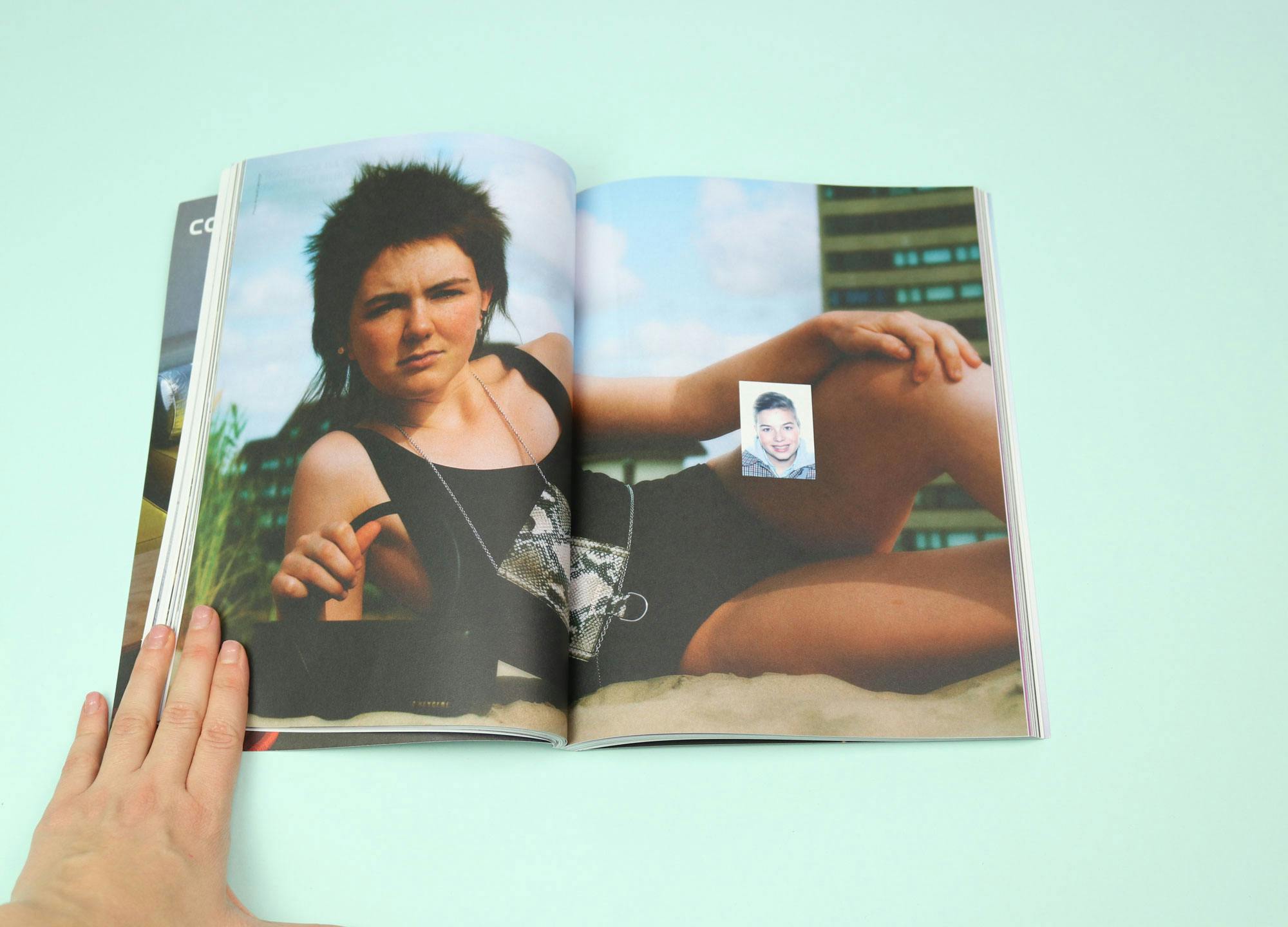
I love the central spreads by Kamonlak Sukchai. The space that’s given over to her work is so luxurious!
Dominika: Kamonlak is a female Thai artist who we are very struck by. Every issue we devote a 24-page glossy section of the magazine to the work of just one photographer. Since the beginning, we have imagined this as a portfolio section. Previous issues have featured Nobuyoshi Araki, Daido Moriyama and Thomas Hauser.
Aldo: We are drawn to photographs that are a little insolent, or disturbing. We don’t want something that is shocking just for the sake of it; what we’re looking for is a series of photographs that perhaps at first you don’t quite get. But they make you want to look, and look again. The work must be able to sustain 24 pages without getting repetitive. We find it very difficult to decide who to choose every issue, but we love doing it.
It is difficult to describe exactly what Matto is. You don’t have a tidy soundbite summing up the magazine. Why is that?
Aldo: When we started the magazine, we didn’t want a precise plan. Most magazines will say, “Ok we are high fashion”, or “we are art”, but we wanted to create something that was a hybrid, that reflected our interests. Sometimes we don’t know exactly where we are going, but it is nice not to feel restricted. We also wanted to make a contemporary art magazine that felt more accessible; that felt closer both to the artist and the reader.
Dominika: I think above all we are motivated by a desire to capture something true about our subjects. We interview everyone in person, often multiple times. For example, we met with Michele Lamy, who creates Rick Owens Furniture, three times. We visited the atelier in south Paris, and then again at her house so we could see her and the furniture in use. And then we made a video with her at the Carpenters Workshop Gallery. We like to take time with our features in order to translate the esprit — the energy — these people have in real life.

